These alfajores are made from two soft, cornstarch cookies that are filled with gooey dulce de leche (a caramel-like spread). They're sweet with a melt-in-your-mouth quality. This is the most traditional and perfect recipe of them all. If you never had alfajores, you're in for a treat.
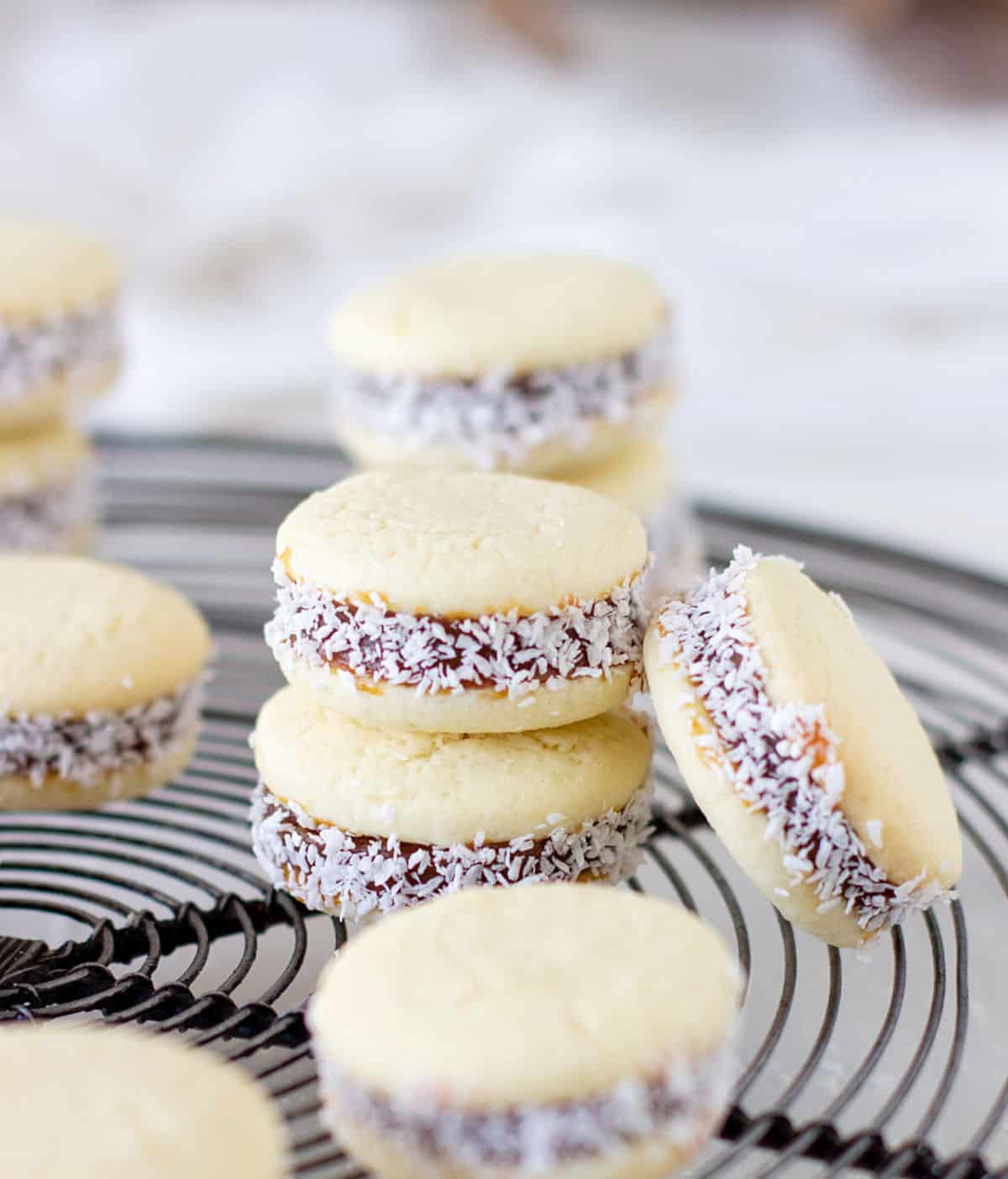
As an Amazon Associate, I earn from qualifying purchases. Please read my disclosure policy.
Originally published in 2012, the text and images in this post have been updated to serve you better. The recipe remains the same.
Alfajores can be found in many different variations, including different fillings, coatings, and shapes.
They are often served with coffee or tea and are a popular snack or dessert.
The oldest is the cornstarch alfajores here today.
I know alfajores
I'm from Argentina and, as I told you in the post about walnut alfajores, we are the biggest consumers of these sweet snacks worldwide.
So trust me when I say that as far as traditional cornstarch alfajores go, this is the only recipe you'll ever need.
The original hails from a 90-year-old cookbook from Doña Petrona (our own Julia Child) and is still the recipe we all adapt. Sort of like the chocolate chip cookies recipe from Toll House. It's where they all start, isn't it?
Overall, the combination of delicate texture, subtle flavor, and sweet filling and coating is what makes cornstarch alfajores so delicious and beloved by many people.
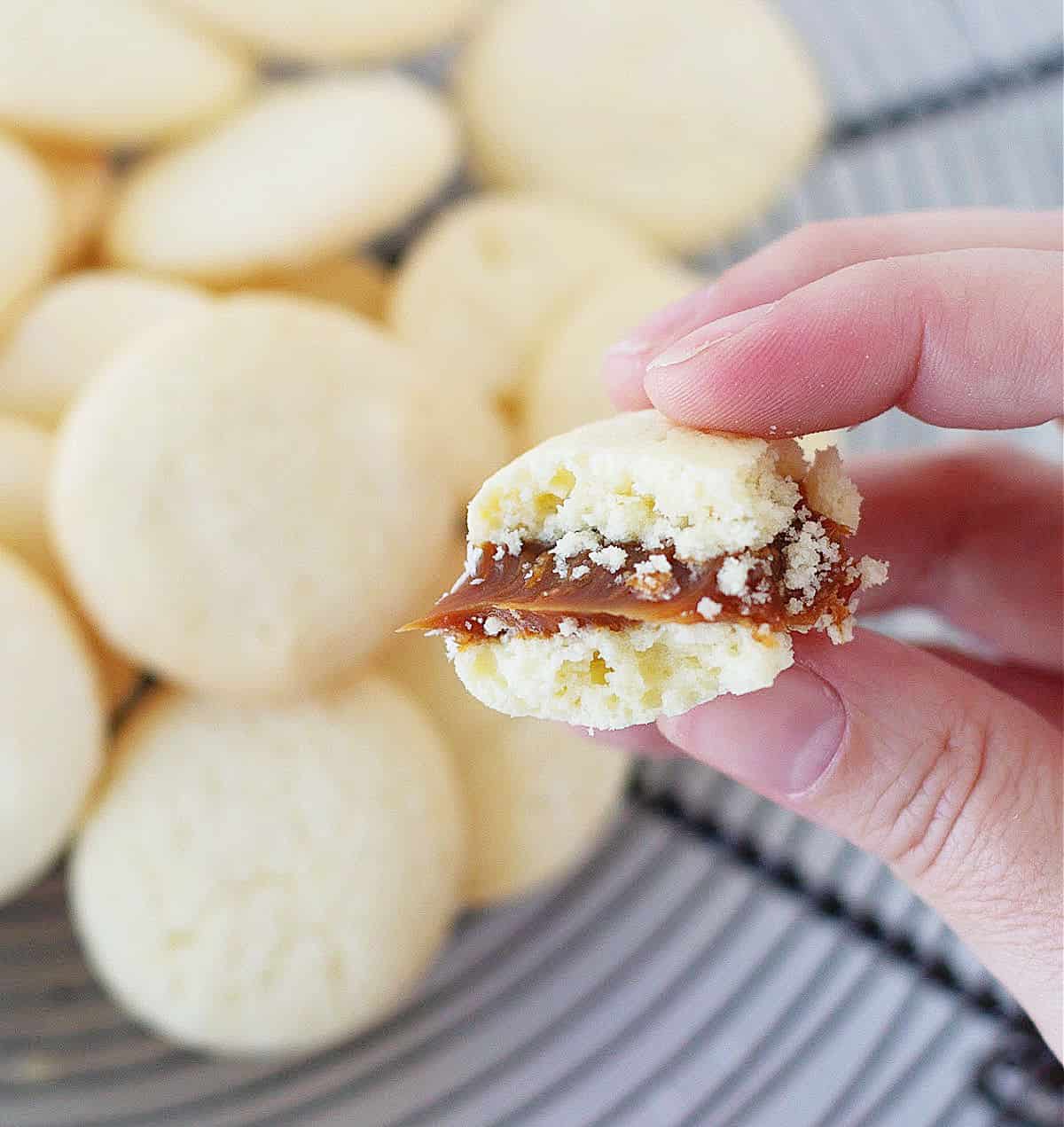
What are alfajores?
An alfajor (singular) is a sandwich made of two discs of dough with a filling in between. A sandwich cookie, or a wagon wheel with a different filling, depending on what type of alfajor.
Alfajores have a unique combination of textures and flavors. They are delicate yet rich, crumbly yet creamy, and sweet yet balanced.
They are very popular in South America, especially Argentina, Perú, and Uruguay.
The most in-demand are probably chocolate alfajores because they're chocolate-covered. Then shortbread alfajores which are usually small and great for tea time, with a cup of coffee, or as finger food at a celebration.
ALL are filled with dulce de leche unless specified.
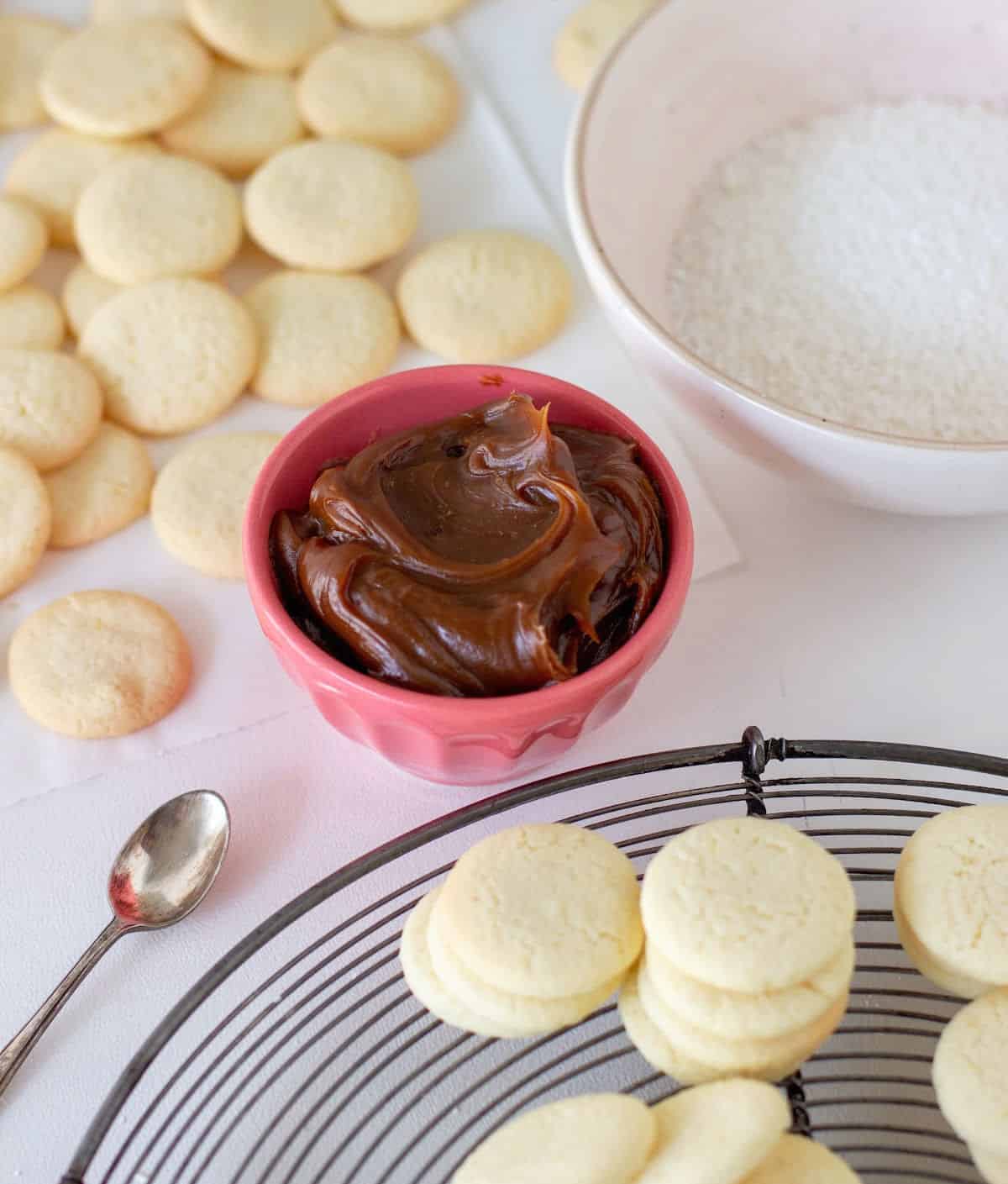
Ingredient list
- Cornstarch: it's essential for that crumbly texture.
- Unsalted butter.
- White granulated sugar.
- Eggs: large, fresh.
- All-purpose flour.
- Salt: I like to use kosher salt when baking. But regular table salt works just fine.
- Baking powder: make sure it's active and not expired.
- Vanilla - I use pure vanilla extract or pure vanilla paste when available, but a good vanilla essence (artificially flavored) also works.
- Lemon zest: freshly grated. A small amount is needed.
- Cognac: you can also use brandy or whisky. It evaporates during baking and leaves behind a wonderful flavor. If you don't want alcohol, omit it.
- Dulce de leche: we're using it as a filling so we need the thicker kind. I always use dulce de leche repostero Vacalin.
About the liquor: this recipe has a magic flavoring trio that is lemon, vanilla, and cognac (or brandy, or whisky). The synergy that results when combining these three flavors is one for the books. None of them is the star but together they are magic.
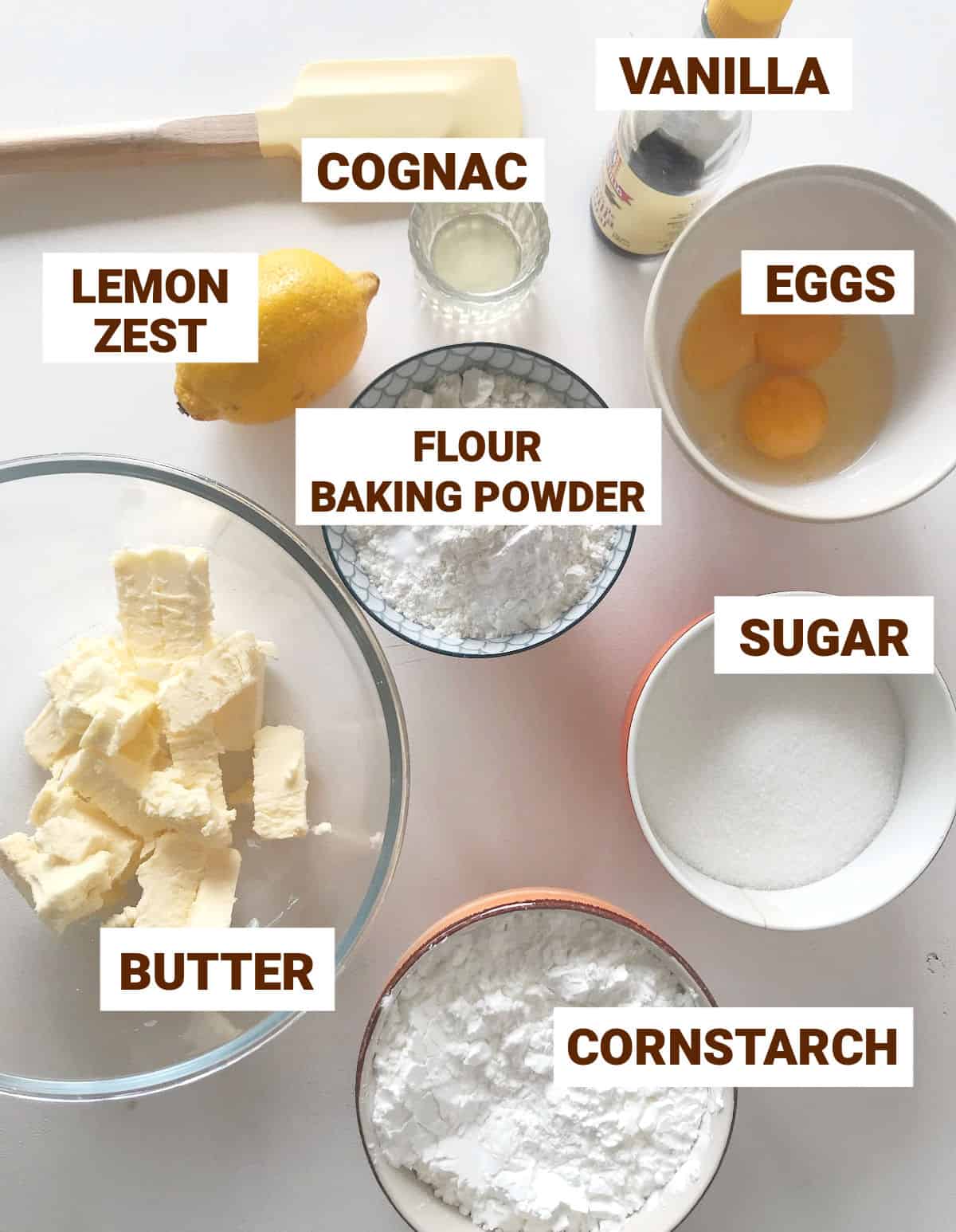
Magic flavoring
I specifically want to acknowledge the flavoring in this recipe.
- It has 3 components: lemon zest, vanilla extract, and cognac (or brandy).
Though there is nothing special about them, when you add all three to a recipe in the right proportions the result is fantastic!
None shine on its own but there is a deep, caramel, fresh flavor that I think is unmatched.
It's not vanilla, it's not lemon, it's not caramel, it is magic. Maybe that's stretching it a bit? Well, you can be the judge of that.
It reminds me of the flavor of red velvet cake. What does it taste like? What is so special about it? It simply has a fabulous flavor. This flavor trio reminds me of that.
How to make the cornstarch dough
The alfajores dough is a simple vanilla dough with cornstarch. It sounds easy and it is. It's all about the right proportions of flour and cornstarch.
- By hand: I use a large bowl and a whisk and a spatula. If the butter is soft, mixing everything is simple.
- Electric mixer: you can use a handheld mixer but make sure you use it at low speed. This is not a dough that needs beating or anything like it. If you use a stand mixer with the paddle attachment, mix at the lowest speed.
The final dough is soft to the touch and neither sticky nor dry. It needs to be refrigerated before rolling.
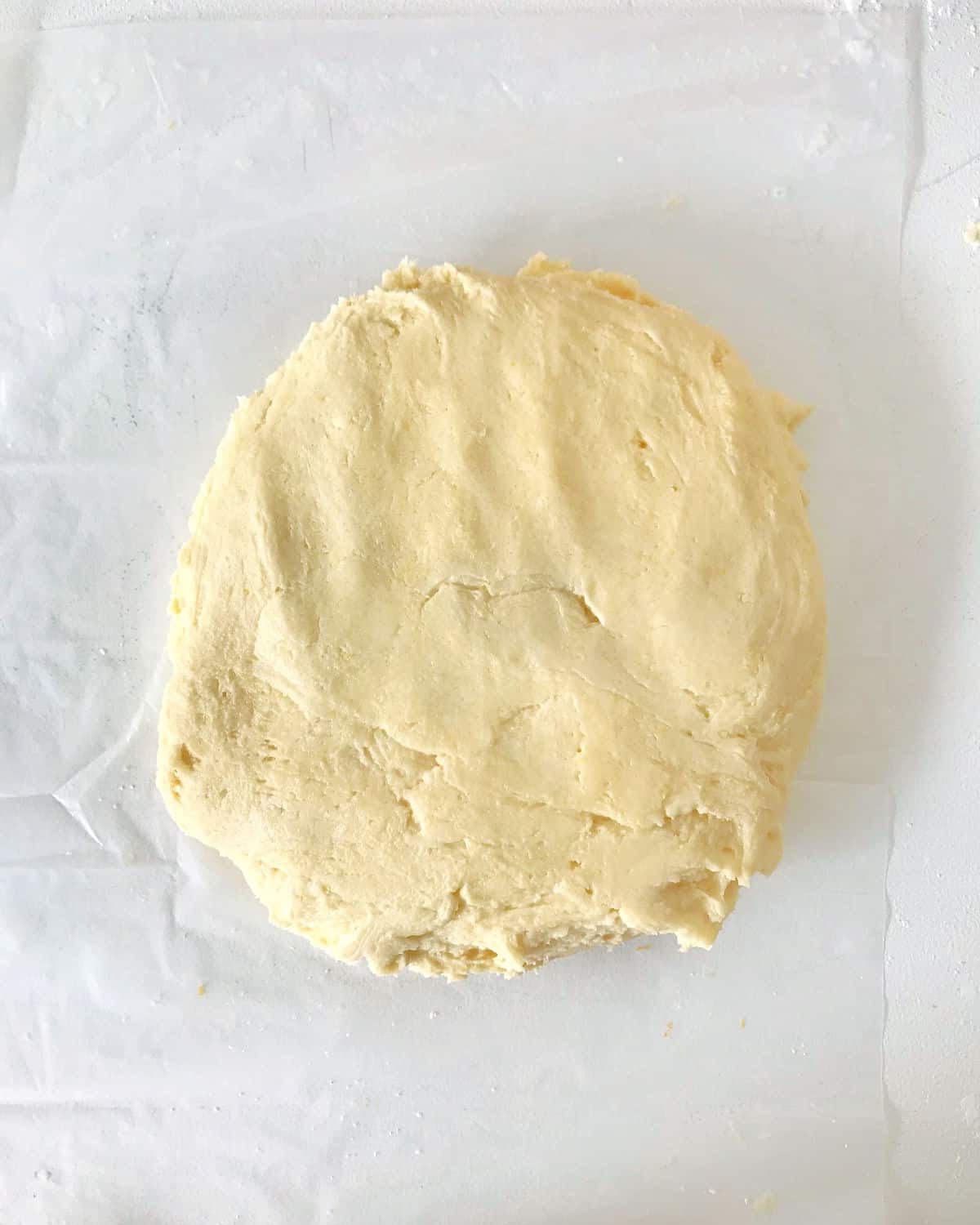
Rolling the dough
After refrigerating the dough for a few hours, it's time to roll and cut.
This dough is soft and very easy to manage. So a lightly floured counter and a good rolling pin are all you need.
Cookie cutters: I use a small round cutter, which is the traditional shape of an alfajor. The dough doesn't change much during baking, and the cookies will mostly keep their shape, so you can, technically, use other forms. Still, I recommend using simple patterns.
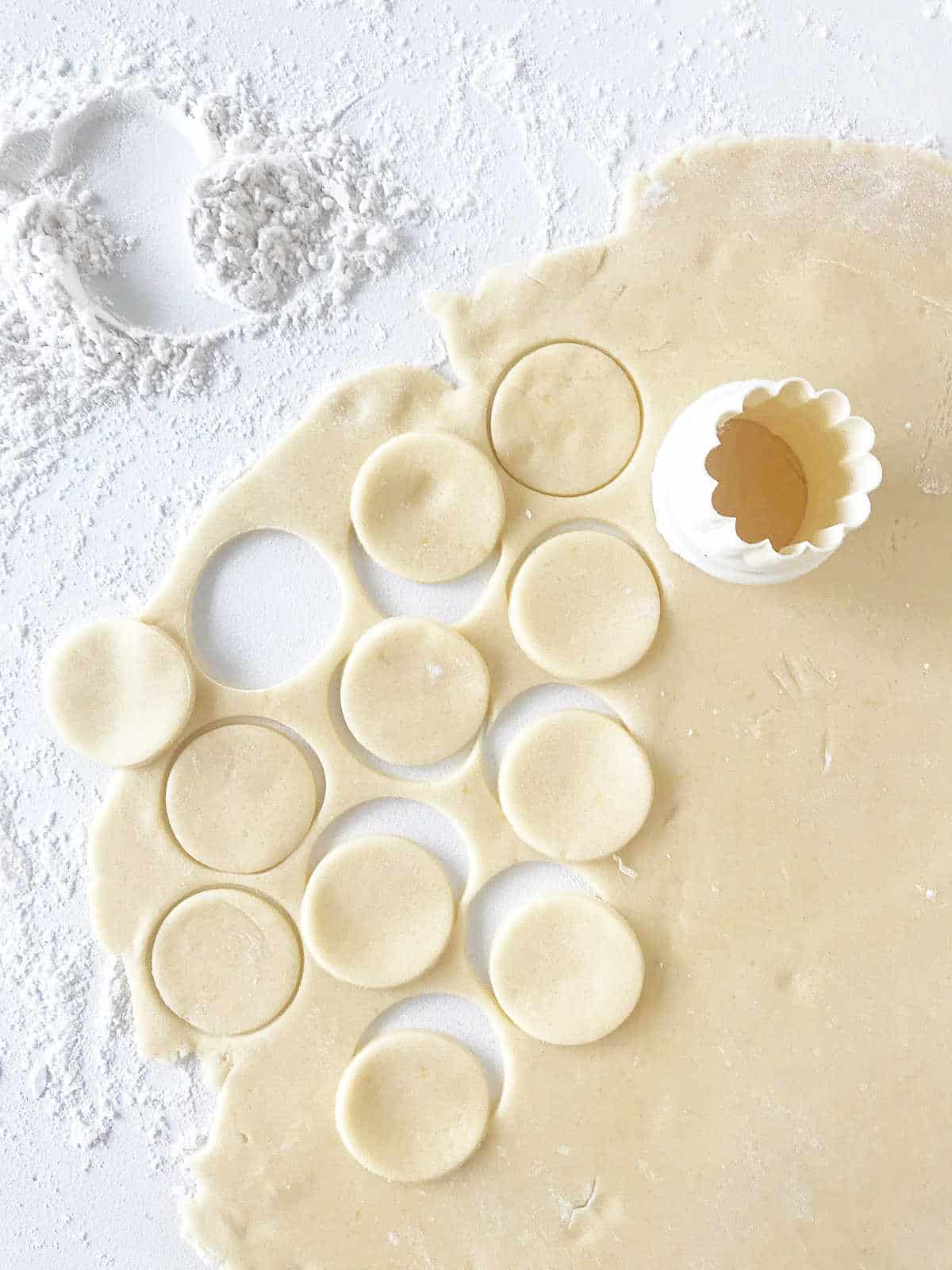
- Preheated oven: always make sure it's on before you start rolling the dough. If you forgot, place the sheets in the fridge while the oven gets to the desired temperature.
- Preparing the cookie sheets: I use parchment paper or lightly buttered sheets, both work well.
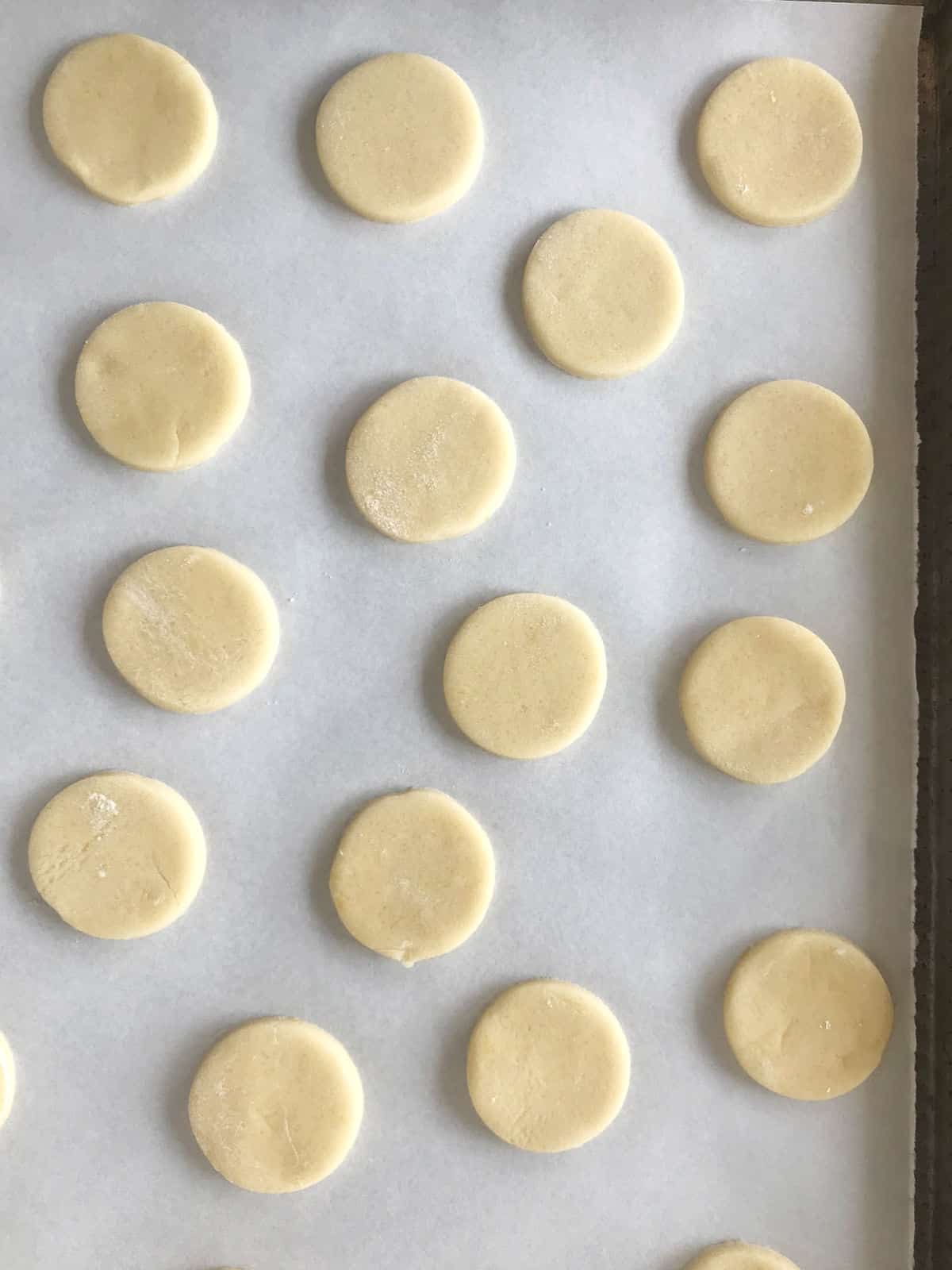
You should leave space between the rounds, but not much since the cookies won't expand a lot.
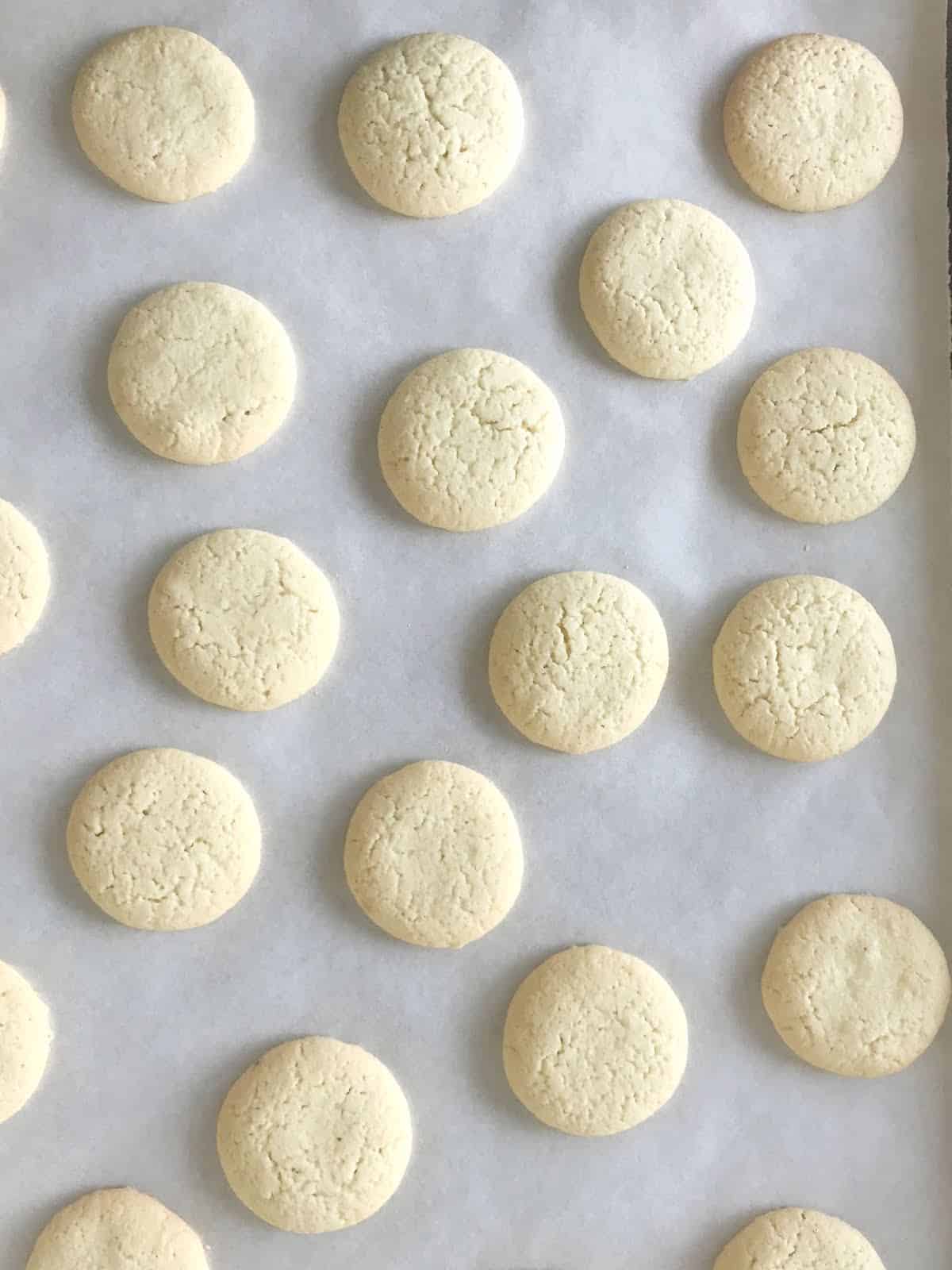
These are light-colored, delicate cookies so bake until barely starting to color. Don't be tempted to bake them longer as they will be too crisp and won't soften as they should.
What is dulce de leche?
Dulce de leche is a sweet milk jam, a cousin to caramel, made with milk, sugar, and baking soda, the latter being accountable for its dark color.
It takes a few hours to make and there are as many tips and tricks as there are grandmothers in this country. Each with its own recipe.
We have an abundance of commercial brands and styles, pretty much like peanut butter in the US, so we hardly make it at home.
The flavor is very sweet, similar to caramel but not quite. It does have a milk undertone, something that caramel lacks, and some might say it’s not as sophisticated, and they might be right. I’m a raving fan so my opinion is biased.
IMPORTANT: for fillings, you need to use what we call pastry dulce de leche. It's much thicker than the regular kind. Look for the word Repostero on the label. The best one available online (that we also use here!) is Vacalin Dulce de Leche Repostero. Another good one is Veronica dulce de leche repostero. If you want to buy in bulk a great one is San Ignacio repostero (22 pounds) or Vacalin repostero (22 pounds).
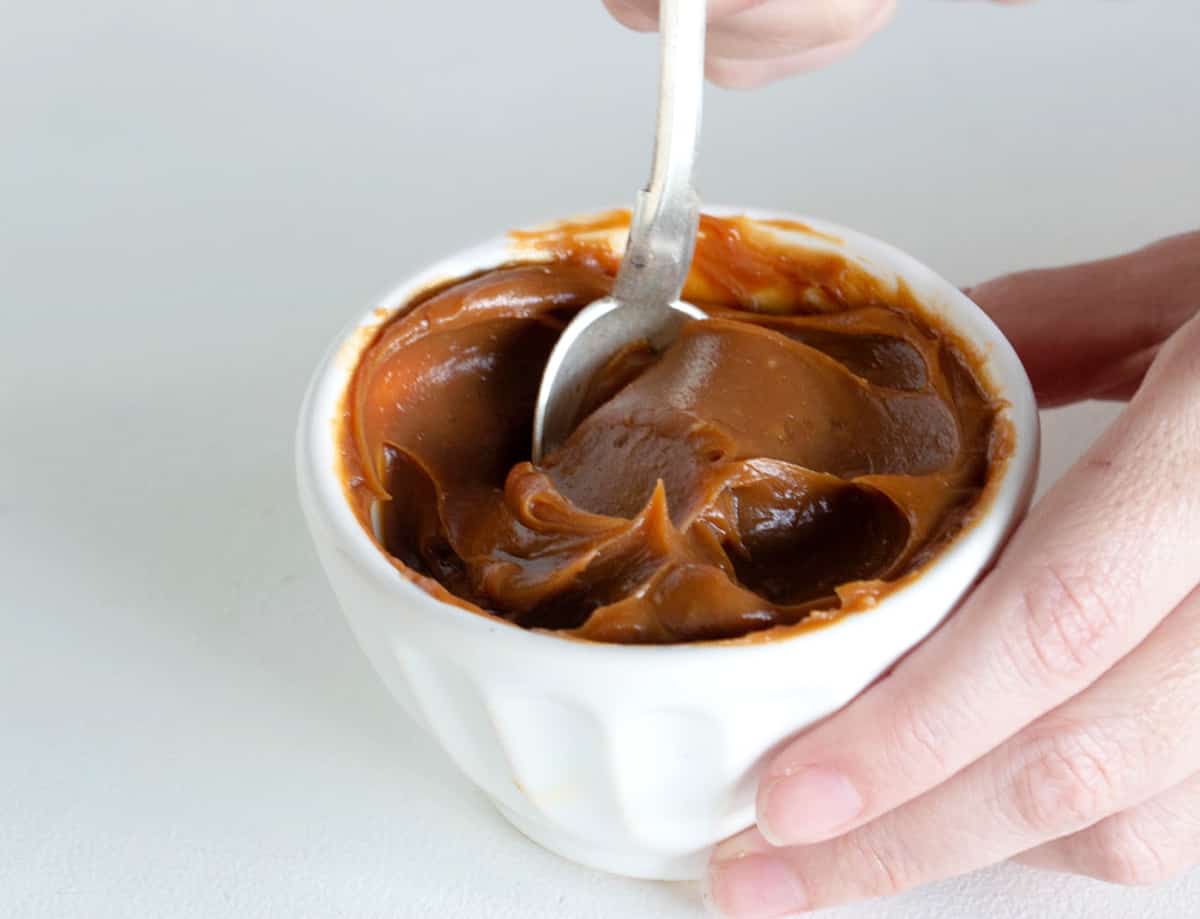
Filling the alfajores
The traditional filling was, is, and will always be dulce de leche.
Piping bag: you can use it with a smooth, plain piping tip for a more even filling, or use a teaspoon and get more of an irregular filling.
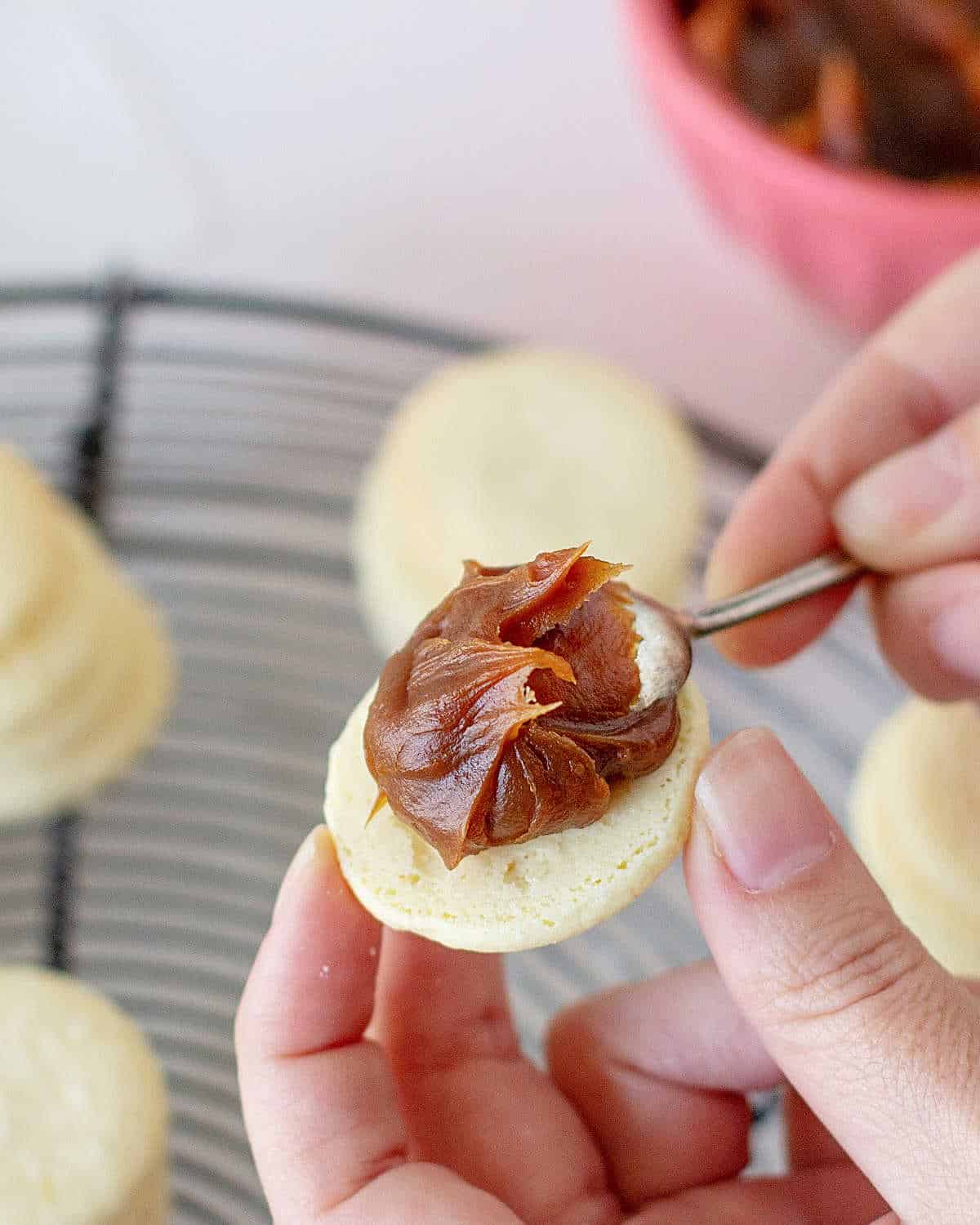
Use a teaspoon or a piping bag for this part. If you pipe the dulce de leche it will be neater and you probably won't need to smooth out the edges.
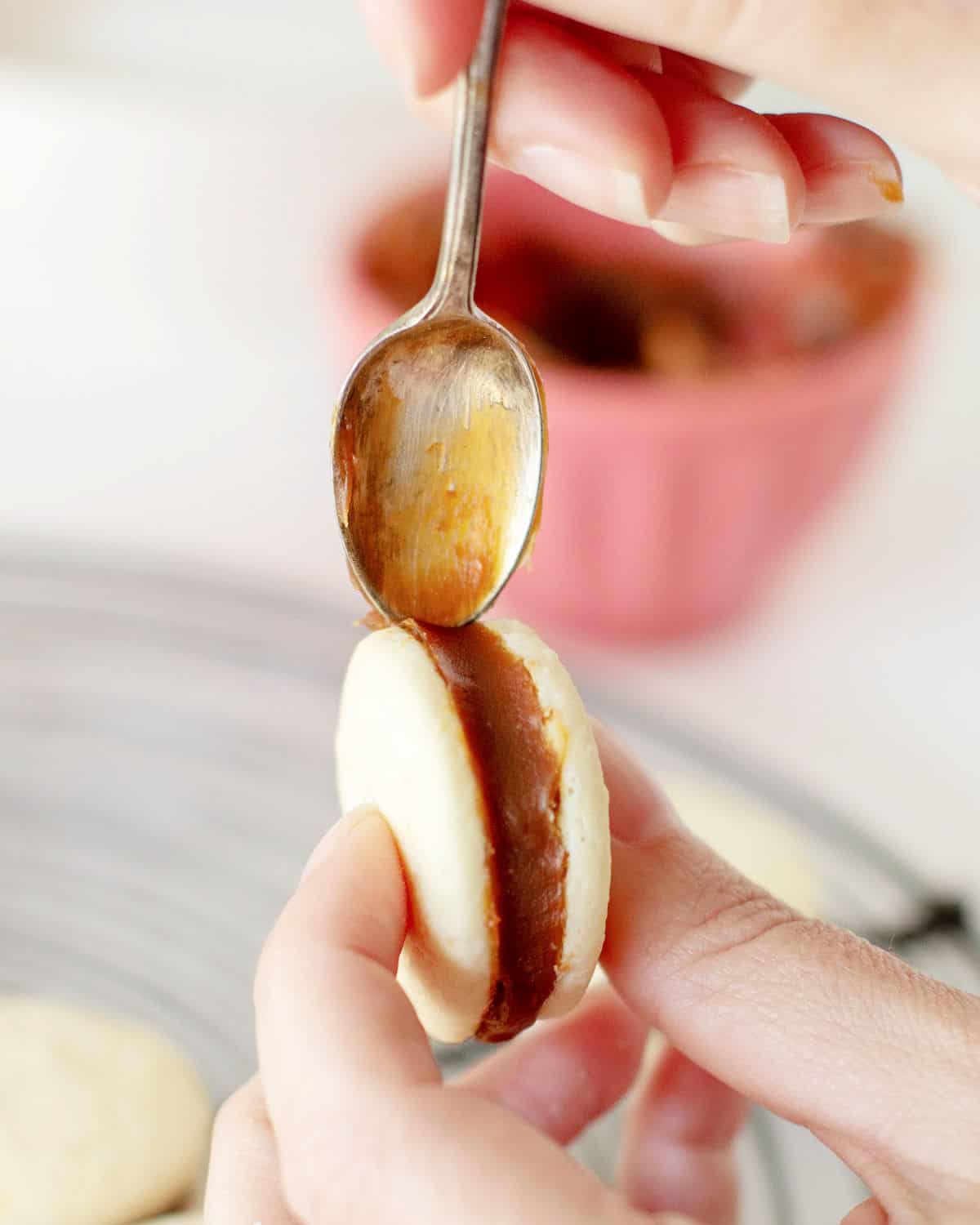
Pass the bottom of a teaspoon around the edges. This will even out the dulce de leche that overflowed when you pressed down the top cookie and make it easier for the coconut to adhere. You can skip this step of course, but the alfajores will be easier to handle.
Rolling
Rolling the sides in unsweetened shredded coconut is the way these beauties roll.
Coconut and dulce de leche are a match made in heaven. Truly spectacular!
Coconut border: this step, on the other hand, is completely optional in my opinion. It pairs fantastically with the rest of the ingredients, but alfajores are also amazing without it. So, don't buy shredded coconut just for this.
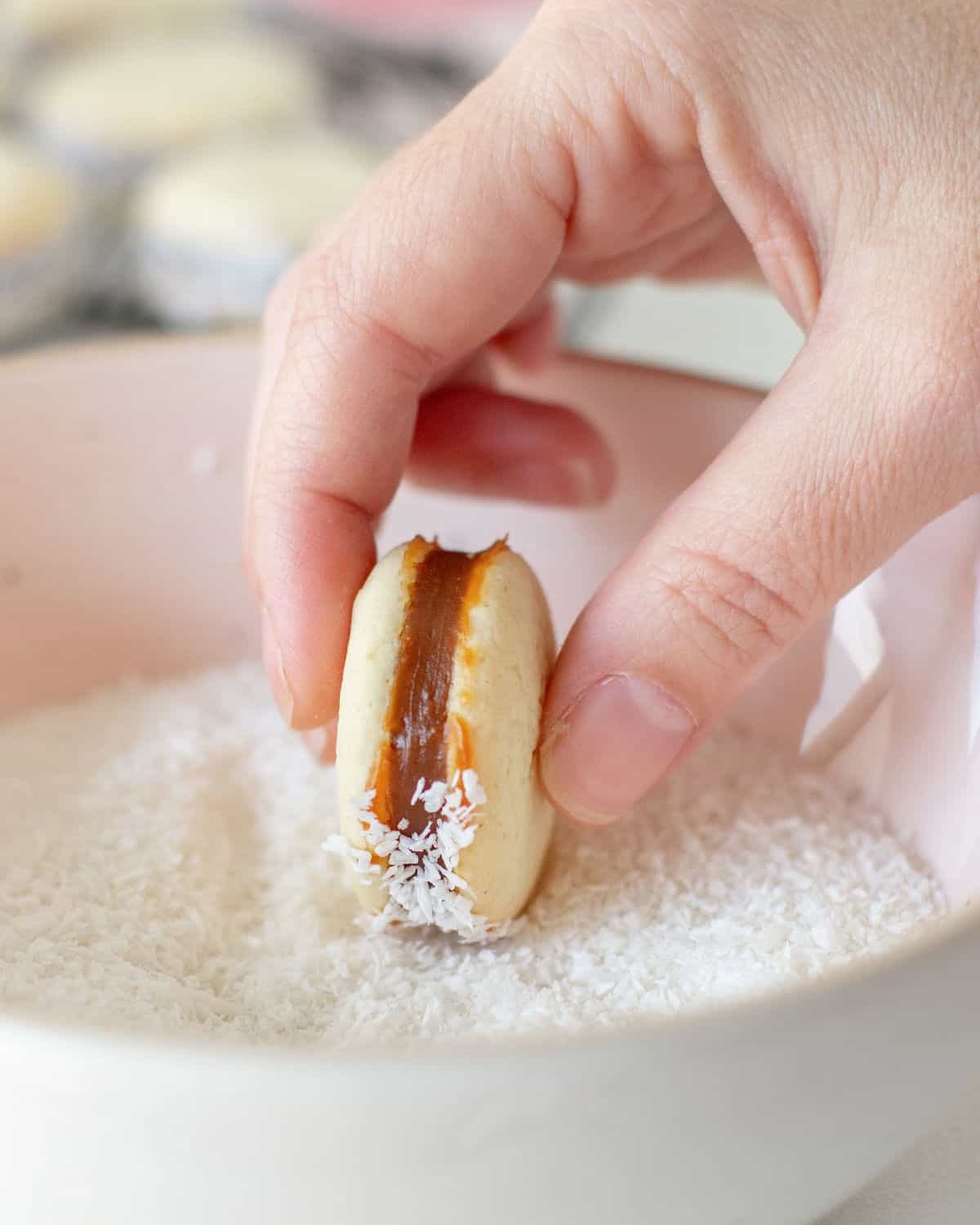
Kitchen notes
- Organization: read the recipe first and ensure you have ingredients at the correct temperature, equipment, and enough workspace. This will make the process so much easier.
- Baking time: keep in mind that all ovens and pans are different, even if they look similar. The baking time in my recipes is as accurate as it can be, but it might take you more or less time. You can use a thermometer(like the OXO oven thermometer) to check that your oven is at the right temperature. I recommend you keep track of how your oven works and what tiny details you might need to adjust.
- Make-ahead: as with most cookie doughs, it can be made ahead and kept for 4-5 days in the refrigerator or up to a month in the freezer. Always make sure you wrap it well in clingy plastic. Otherwise, the top layer will dry out.
- Storage: the cookies can be kept in an airtight container for about a week. Fill them several hours ahead of the time you're planning to eat them so they have time to soften a little. Take into account that the dulce de leche transfers moisture to the cornstarch cookies and they will be softer when you bite into them.
- Eat them and be very happy.

Variations & substitutions
- Don't use liquor: though I recommend using it, omit it if you can't use it. Add ½ a teaspoon more vanilla extract.
- Rolling: coconut is the traditional ingredient, but you can roll them in finely ground nuts or leave them plain.
- Fillings: being simple cornstarch cookies with an indefinite flavor, you can use different fillings like nut butter, buttercream, or a light ganache. Still, I highly encourage you to try them with dulce de leche first.
I sure do hope you try this recipe for cornstarch alfajores.
It is easy and they are incredibly delicious. I imagine many of you never tried them, so trust me when I say the flavor is amazing and that they will become a favorite fast.

Related recipes you might like:
Let me know in the comments below if you made this recipe and loved it and if you had issues so we can troubleshoot together. I love to hear what you think, always. Thanks for being here. It's much appreciated.
You might also consider subscribing to our FREE Baking the Best email series and our regular newsletter. Or connect via Facebook, Instagram, and Pinterest.
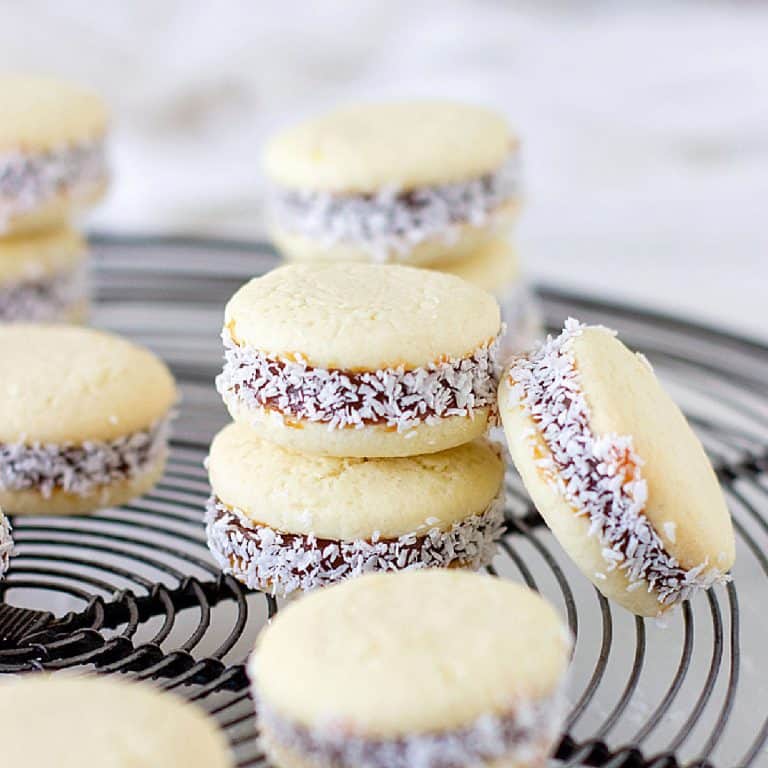
Alfajores Recipe
Alfajores are classic dulce de leche sandwich cookies from South America. Two soft, cornstarch rounds are filled with this gooey caramel-like spread and rolled in coconut. They're sweet with a melt-in-your-mouth quality. This is the best alfajores recipe from Argentina, an easy and authentic family recipe we've been making for decades. Also, check out our shortbread-style alfajores.
- Total Time: 40 minutes
- Yield: about 50 small rounds
Ingredients
- 11 tablespoons (150g) of unsalted butter, at room temperature
- 1 cup (200g) regular white sugar (not powdered sugar)
- 2 egg yolks, at room temperature
- 1 egg, at room temperature
- 1 tablespoon cognac (or brandy or whiskey)
- 1 cup (140g) all-purpose flour
- 2 cups (250g) cornstarch
- ½ teaspoon baking powder
- Pinch of salt
- A few drops of vanilla extract
- Zest of ⅓ lemon
- 1 cup of Dulce de leche (it should be the thick type or 'repostero') See Notes below
- Unsweetened shredded coconut, for garnish (optional)
Instructions
- Mix butter and sugar in a large bowl, until very creamy, using a spatula or handheld mixer, or a wooden spoon.
- Add egg yolks and whole egg and mix well to incorporate.
- Add cognac, vanilla, and lemon zest. Mix well.
- Add the sifted flour, baking powder, salt, and cornstarch gradually, mixing very well until no streaks of dry ingredients remain. The final dough will be very soft and silky but not sticky.
- Pat it into a disc, wrap the dough in plastic wrap or freezer sheets, and let it rest in the refrigerator for 30 minutes, like any sweet dough. At this point, it can be refrigerated for 3 days or frozen for a month, always well wrapped to prevent dryness.
- Preheat oven to 170ºC / 325ºF.
- On a floured surface, roll dough to ½ cm thick (about ¼ inch).
- Using a round cookie cutter, cut circles and place them on a buttered cookie tray or use a Silpat. In my experience, they tend to stick when using parchment paper, but then, all papers are different depending on where you live. Thickness and size are totally up to you; I suggest you try different combinations and see which one works best for your taste.
- Gather the scraps, roll them again and cut more alfajores cookies until you use up all the dough.
- Bake for 10-12 minutes or until barely starting to color. Let cool completely on a wire rack.
- Put a tablespoon of dulce de leche (with a spoon or with a piping bag) and fill one round, flat side up. Press lightly with another round, flat side down forming the alfajores.
- With the back of a small spoon, wipe any dulce de leche that has overflowed. This will leave a path for the coconut to stick.
- Put unsweetened coconut on a small plate and roll the alfajores so that they're evenly coated. Or leave the sides plain.
- Eat them and be happy.
Notes
- Organization: read the recipe first and ensure you have ingredients at the correct temperature, equipment, and enough workspace. This will make the process so much easier.
- Baking time: keep in mind that all ovens and pans are different, even if they look the same or very similar. The baking time in my recipes is as accurate as it can be, but it might take you more or less time. You can use a thermometer that is placed inside the oven (like the OXO oven thermometer) to check that your oven is at the right temperature. I recommend you keep track of how your oven works and what tiny details you might need to adjust.
- Make-ahead: as with most cookie doughs, it can be made ahead and kept for 4-5 days in the refrigerator or up to a month in the freezer. Always make sure you wrap it well in clingy plastic. Otherwise, the top layer will dry out.
- Keeping: the cookies keep well in an airtight container for about a week. Fill them several hours ahead of time so they have time to soften a little. Take into account that the dulce de leche transfers moisture to the cornstarch cookies, softening them a little. And it's a good thing.
- Dulce de leche: the type of dulce de leche you use is everything if you want the filling not to leak after you assemble the alfajores. We use what is called 'repostero' which loosely translates to pastry dulce de leche, because it's used for baking and confections. It's thickened, similar to peanut butter, so it will never drip. The best brand is Vacalin dulce de leche repostero, which you can buy online and is the one most of us use here. I highly recommend it.
- Size and thickness: they can be made as small 2-inch rounds or up to 4 inches. Play around with size and thickness until you find your favorite.
- Fillings: when you say alfajores it's implied that they will have a dulce de leche filling. But you can use jams or ganache or cookie butter spreads, or nut butter. In that case, we specify the filling when we name them, like quince jam alfajores, or chocolate mousse alfajores.
- Here's a great recipe for gluten-free alfajores in case you need it.
- Prep Time: 30 minutes
- Cook Time: 10 minutes
- Category: Cookies
- Method: Baking
- Cuisine: Argentinian


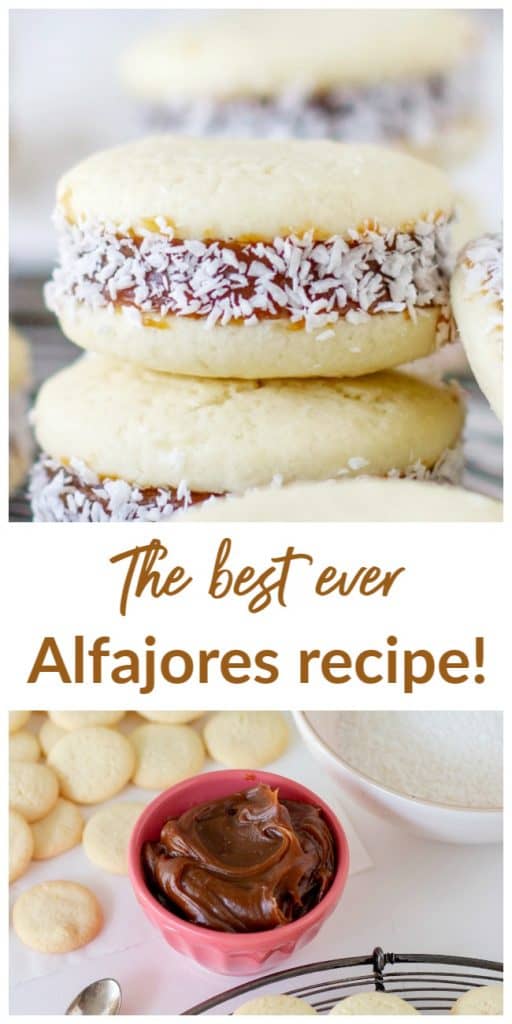
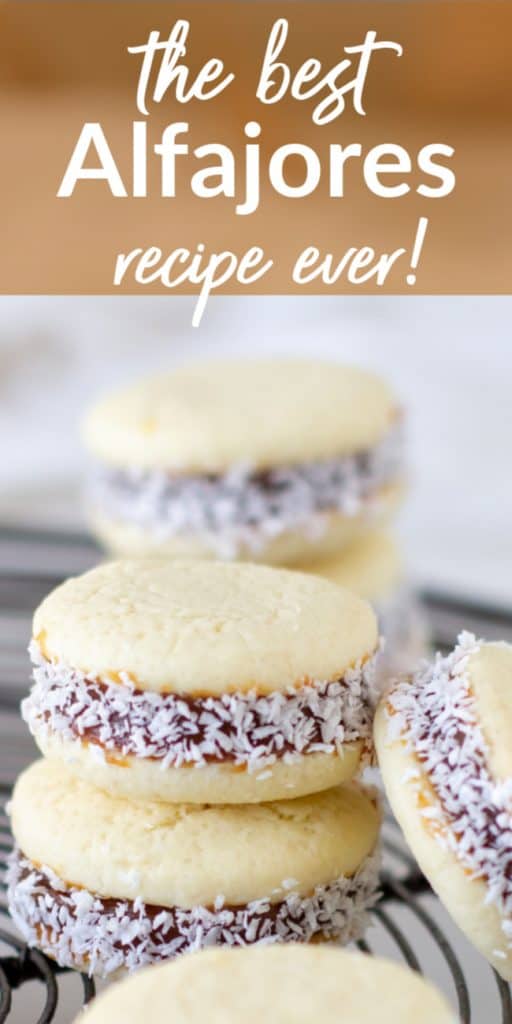
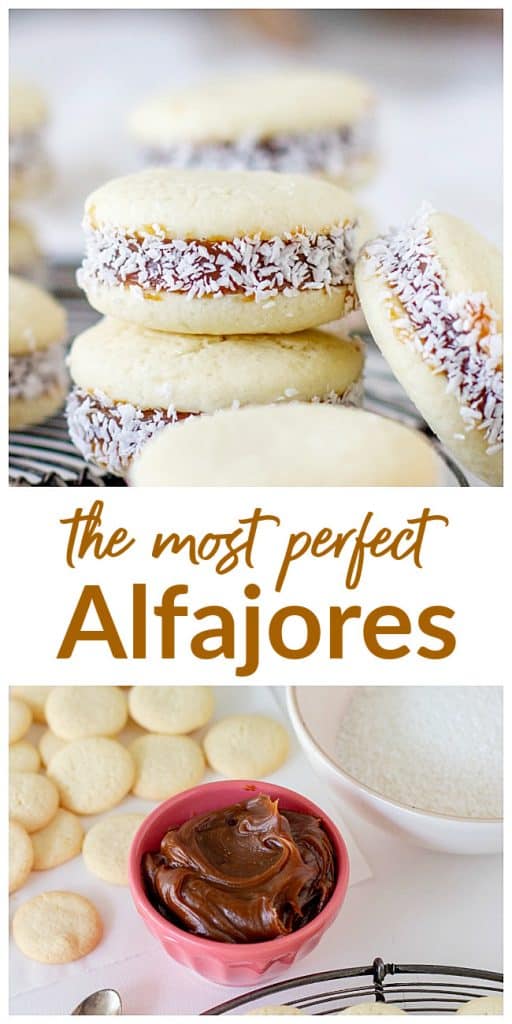
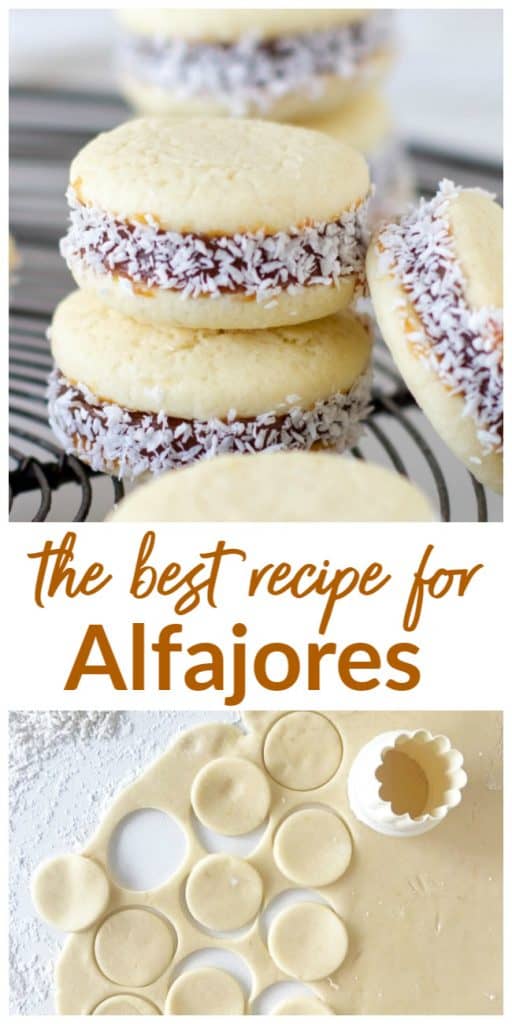
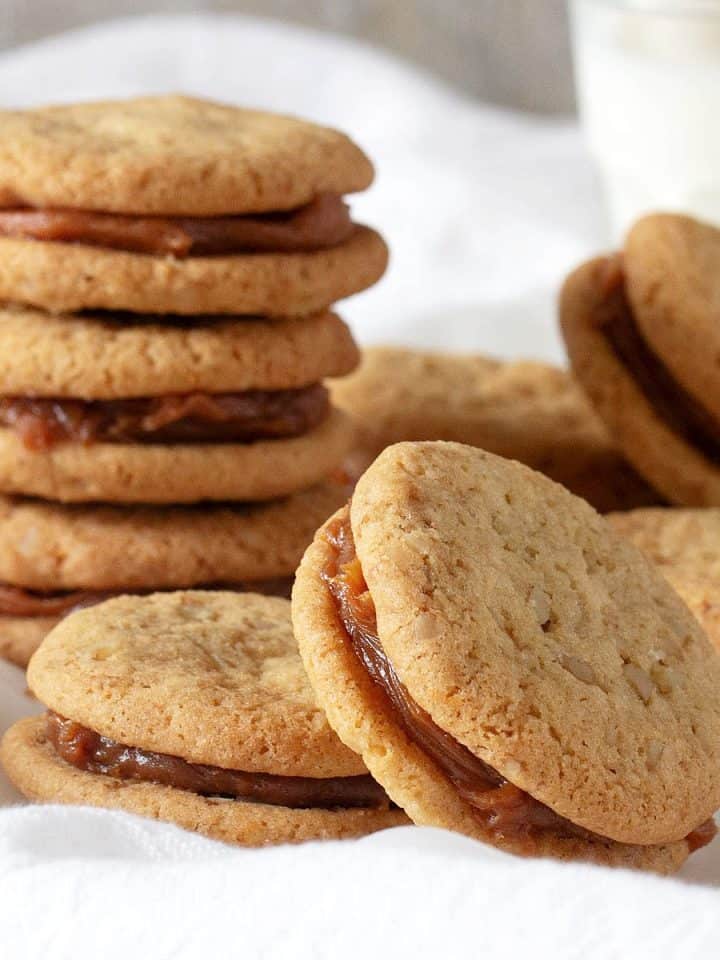
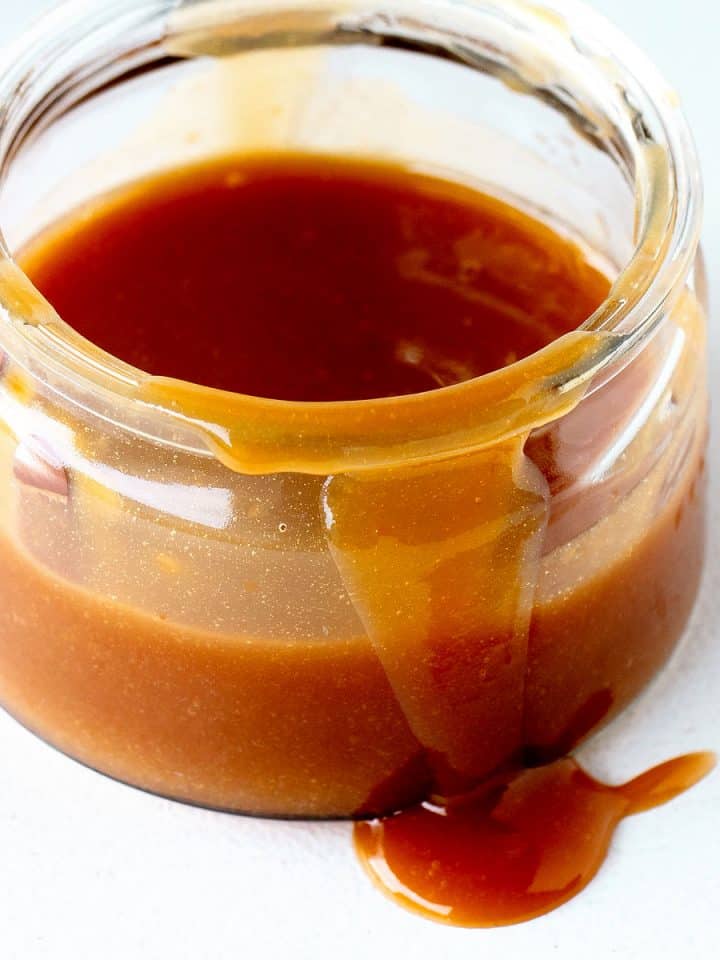
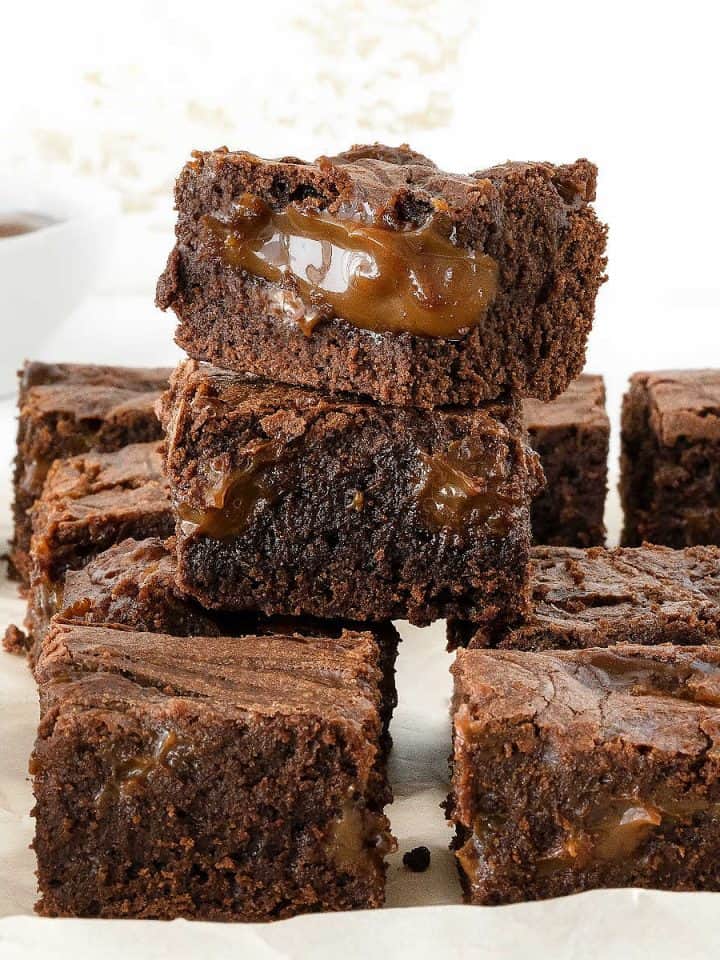

Thank you for leaving a review for this recipe